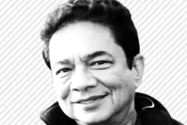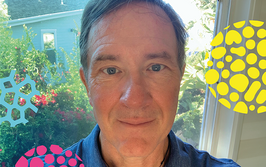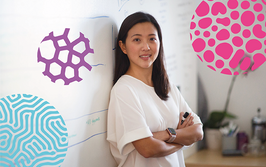Free Spirit
Sitting Down With Purnendu (Sandy) Dasgupta, Jenkins Garrett Professor of Chemistry and Biochemistry, University of Texas at Arlington, USA.

We noticed you had a busy end to 2014.
Yes – it was rather momentous for me because I had three papers published in the same issue of Analytical Chemistry about the theory, workings and exploitation of a $100 detector for open tubular ion chromatography. I’ve had “twins” before, but that was my first “Trifecta” as my friend Dan Armstrong would say. I also got elected a Fellow of the IEEE, much to my surprise.
Such success must reaffirm your life choices...
Yes, I was very pleased. I recently visited China, Korea and Japan where I had the chance to see some of my overseas students – that’s something else that tells me I made the right choice by staying in academia. Many of us who work on the more practical side of science have a great deal of opportunity to work in industry, and I’ve had my fair share of temptations. But I can play in as many sandboxes as I want where I am in academia, and I know when I travel to many parts of the world there will be someone at the airport who is truly delighted to see me. That’s hard to beat.
Could you walk us through your early years?
I went to Presidency College in Calcutta at 15, which was very different to my experience as a relatively younger student at an all-boys high school. I discovered women for one thing! On a much more serious note, I also got very deeply involved in (militant) politics and it became unsafe for me to stay there (“The Lowland” by Jhumpa Lahiri offers a glimpse). Those times consumed a great number of young people and I feel fortunate that I am alive and well. In essence, we wanted to reform India. I laid low for a while and then went to a small town where I majored in chemistry and got my masters in organic chemistry.
So, you stayed in chemistry after that?
Actually, I wanted to be a poet (I’ve since published a book of poetry – and a novel), but I realized that I couldn’t make a living from it, and ended up as a photographer... My magazine sent me to take shots of Professor Santiranjan Palit, who delved into my past and told me I was wasting my life. Three days later I’d quit my job and joined his lab.
What did you do there?
I was investigating the limiting nature of Faraday’s laws of electrolysis – in particular, the fact that they are only accurate when the solutions are relatively concentrated. I wrote up my hypothesis of why this was happening– and it came back with a sea of red ink. Palit would often tell me, “You’re such a bright young man – why are you so stupid?” I didn’t understand what he meant back then – I certainly do now. Anyway, he encouraged me to find a good electrochemist to work with abroad and I moved to the US – Louisiana State University – in 1973. I only stayed two years with my first mentor there – a bitter-sweet early experience with electrochemistry. Nevertheless, it made an impact – we’re still doing electrochemistry of a different sort.
And then?
I was lucky enough to be welcomed into the group of Philip West. After my PhD, I returned to India to find a job, but got a call from Phil about a teaching position. One thing led to another and I never ended up returning to India. I moved from LSU to work as an “Aerosol Research Chemist” at the California Primate Research Center – a very clinical setting – at UC Davis. It was a wonderful experience and ignited my significant interest in ion chemistry (see page 18). However, I was also teaching, which showed me my true calling, and in 1981 I joined the Chemistry Department at Texas Tech University where I stayed for 25 years before coming to UT Arlington.
You come from an academic family...
I’ve been in academia my whole life – and the same can be said for my father (a medical doctor whose PhD happened to use a great deal of analytical chemistry). And my grandfather was in academia most of his life too – a historian and by far the most famous of my family (try Googling Surendra Nath Sen or his book “Eighteen Fifty-seven”). Therefore, I am a third-generation university professor.
How did your family’s academic past influence your choices?
Well, my father always encouraged my curiosity; I don’t know many people anywhere in the world who would have had access to a full-fledged lab in their family home in those days or even now. That lab was purpose built because of my interest in chemistry. And I made good use of it; at the age of 14–15, I was doing experiments worthy of publication today. For example, I developed a scheme of analysis that replaced hydrogen sulfide in metal precipitation – and it was solely on the basis of that work that I was given a national science scholarship, which set me on my winding scientific path. I’ve picked up something useful at every twist and turn; no experience should be thrown away in this life.

Purnendu K. (Sandy) Dasgupta is a native of India and was educated in a college founded by Irish missionaries where he got his bachelor’s degree with honors in Chemistry. He joined Louisiana State University at Baton Rouge as a graduate student in early 1973 and began studies in electrochemistry before switching to research on environmental analysis under Philip W. West. In 1981, Dasgupta joined Texas Tech where he remained for 25 years before moving to the University of Texas at Arlington in 2007 as the Chair and Jenkins Garrett Professor. Research in the Dasgupta lab focuses on finding the best solution to a problem and is not married to any specific technique. The present flagship project in the lab is building an ion chromatography for use in Mars exploration.

















